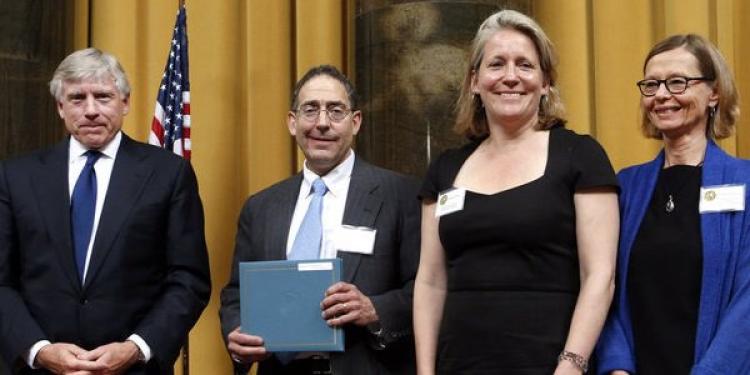Part I – The Works and People That Almost Got First Place in the 2014 Pulitzer Awards
Posted: April 14, 2015
Updated: October 6, 2017

The journal works of finalists are just as honorable as their peers who win $10, 000 and the coveted gold medal.
Last Year, Pulitzer Prizes winners included the Washington Post which won the prestigious public service medal for a series of stories that exposed the National Security agencies secret global surveillance programs. In total, 13 awards were given to different categories under journalism in 2014. the Public Service gained Two Prizes, which were given to The Guardian US and The Washington Post.
The cream of the Pulitzer crop
The work of the following were heralded: Boston Globe Staff’s Investigative Reporting, Chris Hamby of The Center For Public Integrity, Washington, D.C., in the Explanatory Reporting section, Eli Saslow Of The Washington Post, in Local Reporting, Will Hobson and Michael Laforgia of The Tampa Bay Times came out top winners too.
In the National Reporting category 2014 David Philipps of The Gazette, Colorado Springs, Co clinched a prize. So did Jason Szep and Andrew R.C. Marshall of Reuters for International Reporting. In the Commentary section, Stephen Henderson of The Detroit Free Press won and the category Criticism prize went to Inga Saffron of The Philadelphia Inquirer, won.
For Editorial Writing, that honor went to The Editorial Staff of The Oregonian, Portland. Kevin Siers of The Charlotte Observer was awarded for his Editorial Cartooning. While in the Breaking News Photography, Tyler Hicks of The New York Times came first. In Feature Photography, Josh Haner of The New York Times got his $10,000. But what about those, that didn’t quite make it?
Exposure of a corrupt police force
In the Public Service section, the finalists included Newsday, Long Island, New York, where US gambling laws allow casinos to compete equitably. The newspaper used comprehensive reporting and digital tools to unveil shootings, beatings and other hidden malpractices by some Long Island police officers. This resulted in the setting up of a grand jury and an official re-examination of police who should be held responsible for their actions.
Among Breaking News Reporting projects that didn’t quite make it on the honor’s list are, The Arizona Republic Staff for its weighty coverage of a devastating wildfire that killed 19 firemen and destroyed over 100 homes. The story was depicted with a wide use of journalistic tools. Hats off, too, to The Washington Staff, for its perceptive insight seen in its treatment of the mass shooting at the Washington Navy Yard.
Under the Investigative Reporting section, Megan Twohey of Reuters blew away the board with her expose of an underground Internet marketplace, where instead of mobile betting on sports, parents gave their unwanted children up for adoption. The children were adopted by foreigners. The social welfare regulations were ignored. The startling revelations caused the government to react and take the necessary action to quell the trend.
The Pulitzer Prize Finalist and his ‘god particle’
Cynthia Hubert and Philippe Reese also shared the work of The Sacramento Bee for which they got adequate attention. They investigated how buses literally dumped over 1,500 psychiatric patients from 48 states over five years into mental hospital, Las Vegas where US poker rooms rein. Thanks to the reporting this practice was terminated and several hospital employees were fired.
In Explanatory Reporting, Dennis Overbye of The New York Times, became a finalist for the light he shed on the competition of 2 rivaling of 3,000 scientists and technicians. They took 7 years to discover what physicists call the ‘God particle’”. The “God particle” is the nickname of a subatomic particle called the Higgs boson. Overbye had first written to the Pulitzer Prize board in 2012 to tell his story of a particle that some say could one day end the Universe.
How Violence and Drugs Invades America
Les Zaitz, wrote for The Oregonian, Portland and was nominated for his raw narratives that revealed how lethal Mexican drug cartels infiltrated Oregon and other regions of the country. He took personal risk on writing and publishing the pieces, which could also hurt his sources. In Local Reporting, Joan McClane, Todd South, Doug Strickland and Mary Miller of the Chattanooga Times Free Press were praised for using an array of journalistic tools to scout the “no-snitch” way of life that aids in encouraging violence in one of the most dangerous cities in the South.
Rebecca D. O’Brien and Thomas Mashberg of The Record, Woodland Park, N.J. honed their writing skills to perfection to produce the heart wrenching account of how heroin crept into a suburban community. Addicts and their families were interviewed. They showed how the drug circuit spread from South America to of northern New Jersey. All these works which were represented among the entries reviewed by the Pulitzer jury panels were definitely top bets on our US gambling news list of goodies!












